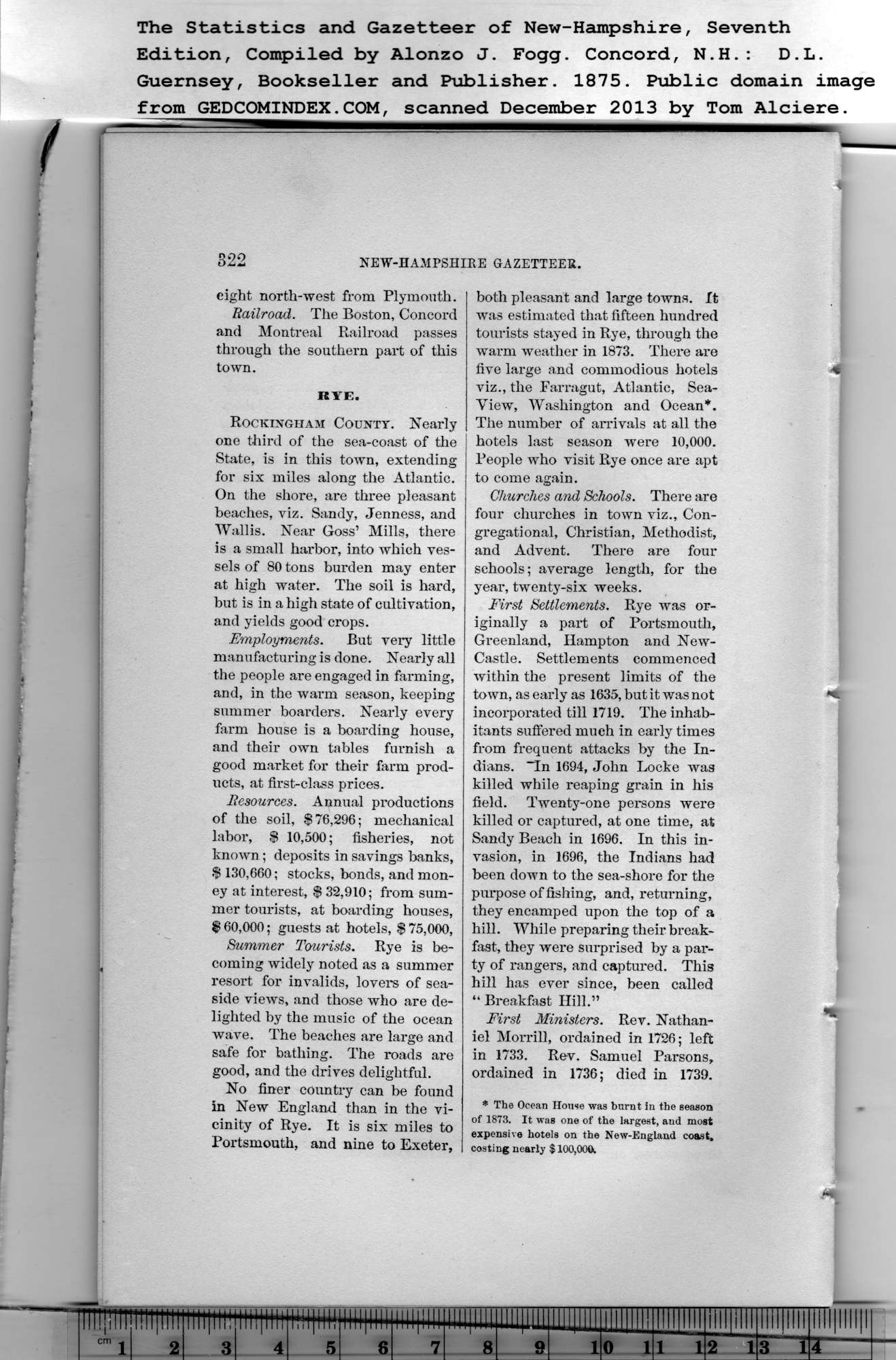|
eight north-west from Plymouth.
Railroad. The Boston, Concord
and Montreal Railroad passes
through the southern part of this
town.
RTE.
Rockingham Countt. Nearly
one third of the sea-coast of the
State, is in this town, extending
for six miles along the Atlantic.
On the shore, are three pleasant
beaches, viz. Sandy, Jenness, and
Wallis. Near Goss’ Mills, there
is a small harbor, into which ves-
sels of 80 tons burden may enter
at high water. The soil is hard,
but is in a high state of cultivation,
and yields good crops.
Employments. But very little
manufacturing is done. Nearly all
the people are engaged in farming,
and, in the warm season, keeping
summer boarders. Nearly every
farm house is a boarding house,
and their own tables furnish a
good market for their farm prod-
ucts, at first-class prices.
Resources. Annual productions
of the soil, $76,296; mechanical
labor, $ 10,500; fisheries, not
known; deposits in savings banks,
$ 130,660; stocks, bonds, and mon-
ey at interest, $ 32,910; from sum-
mer tourists, at boarding houses,
$ 60,000; guests at hotels, $ 75,000,
Summer Tourists. Rye is be-
coming widely noted as a summer
resort for invalids, lovers of sea-
side views, and those who are de-
lighted by the music of the ocean
wave. The beaches are large and
safe for bathing. The roads are
good, and the drives delightful. |
No finer country can be found
in New England than in the vi-
cinity of Rye. It is six miles to
Portsmouth, and nine to Exeter,
both pleasant and large towns. It
was estimated that fifteen hundred
tourists stayed in Rye, through the
warm weather in 1873. There are
five large and commodious hotels
viz., the Farragut, Atlantic, Sea-
View, Washington and Ocean*.
The number of arrivals at all the
hotels last season were 10,000.
People who visit Rye once are apt
to come again.
Churches and Schools. There are
four churches in town viz., Con-
gregational, Christian, Methodist,
and Advent. There are four
schools; average length, for the
year, twenty-six weeks.
First Settlements. Rye was or-
iginally a part of Portsmouth,
Greenland, Hampton and New-
Castle. Settlements commenced
within the present limits of the
town, as early as 1635, but it was not
incorporated till 1719. The inhab-
itants suffered much in early times
from frequent attacks by the In-
dians. "In 1694, John Locke was
killed while reaping grain in his
field. Twenty-one persons were
killed or captured, at one time, at
Sandy Beach in 1696. In this in-
vasion, in 1696, the Indians had
been down to the sea-shore for the
purpose of fishing, and, returning,
they encamped upon the top of a
hill. While preparing their break-
fast, they were surprised by a par-
ty of rangers, and captured. This
hill has ever since, been called
“ Breakfast Hill.”
First Ministers. Rev. Nathan-
iel Morrill, ordained in 1726; left
in 1733. Rev. Samuel Parsons,
ordained in 1736; died in 1739.
* The Ocean House was burnt in the season
of 1873. It was one of the largest, and most
expensive hotels on the New-England coast,
costing nearly $ 100,000. |
